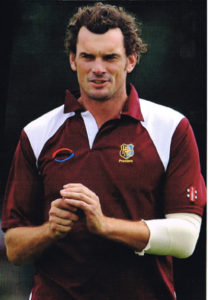
On April 21, 1867 the newly-formed Howick Cricket Club took to the field against the visiting Onehunga Cricket Club on the Village Square – the ground we now call Howick Domain.
Howick Cricket Club was formed at a series of meetings held in Whites Store chaired by Dr Hovell, who was prominent in Howick Village affairs and was elected the cricket club’s first president in November, 1866.
The members played two married/singles matches and held practices to prepare for the first official match on Easter Monday.
There was great excitement on the day of the match with most of the community coming to watch. The match was followed by a magnificent dinner at Howick Arms prepared by Mrs Brady. As was the custom in Victorian times, there were many toasts drunk and speeches made.
The Howick Cricket Club was made up of local people who came from all walks of life. Howick was just a small village and very isolated from Auckland City and as life was so hard, people had begun to move away to the city or Thames Goldfields.
Shortly after the first match, Howick Domain became unplayable due to its swampy nature. The club was offered the use of a field on Every Macleans farm on Bleakhouse Road. This led to a major change in the club’s direction.
For the next 20 years, the club drew from the wider East Tamaki district, as Howick Pakuranga was referred to, and became known as Pakuranga Cricket Club, although there was always a Howick club in the background.
Pakuranga became well-known as a strong country club that could foot it with city clubs when they met.
In 1895 the Howick and Pakuranga clubs joined forces to play in the Franklin Sub Union competition, winning it four times before splitting in 1900 to Howick and Pakuranga.
The Fitzpatrick family were the basis of the Pakuranga club for the late 19th Century. Edward Fitzpatrick was an outstanding cricketer and is regarded as the father of Howick Pakuranga cricket.
It was he who initiated the move to play on Pigeon Mountain Domain and he, along with his brothers John and Bill, who organised the club.
The clubs stayed separated until 1935 when, once again, they amalgamated to play in the Manukau Sub Association competition. The fact was that players were turning out for both sides since around 1870 because the area could not sustain two full teams.
The combined club was known as Howick Cricket Club and Pakuranga Cricket Club’s name disappeared.
After the end of World War II, Howick Cricket Club came out of recess and gradually built up its numbers as the population grew, adding more teams every year.
In 1965, the club joined the Auckland Cricket Association, entering the Senior B Grade. It changed its name to Howick Pakuranga in 1968 because the committee believed it should take responsibility for all cricket in the area.
Finally in 1976-77, Howick Pakuranga gained premier status and went on to win its first championship in 1981-82.
The population of the district exploded during the 1970s and Howick Pakuranga Cricket Club matched this growth to the extent that by around 1980 it was one of the biggest clubs in New Zealand and has remained so ever since. In 2015-16 the club had nearly 1000 members.
This season, Howick Pakuranga Cricket Club members Glenn Phillips, Colin Munro, Colin de Grandhomme and Mitchell McClenaghan have either played for the Black Caps or are in the Black Caps squad, and Cody Andrews, Shawn Hicks, Danru Ferns and Donovan Grobbelaar have played for the Auckland Aces.
Howick Pakuranga has come a long way from that day in April 1867 when the first Howick XI took to the field against the might of Onehunga Cricket Club.
The club has a lot to celebrate this year and there are plenty of events planned.
- March 2: Induction of Kyle Mills as the twelfth Howick Pakuranga Cricket Club Legend held at Clubrooms
- March 5: Annual Howick Pakuranga Dinner with Ian Botham as the main speaker at Sacred Heart College
- April 21: Book launch at HPCC Clubrooms of Jim Allnatt’s THE MIGHTY MAROONS – 150 Years of Howick Pakuranga Cricket.








